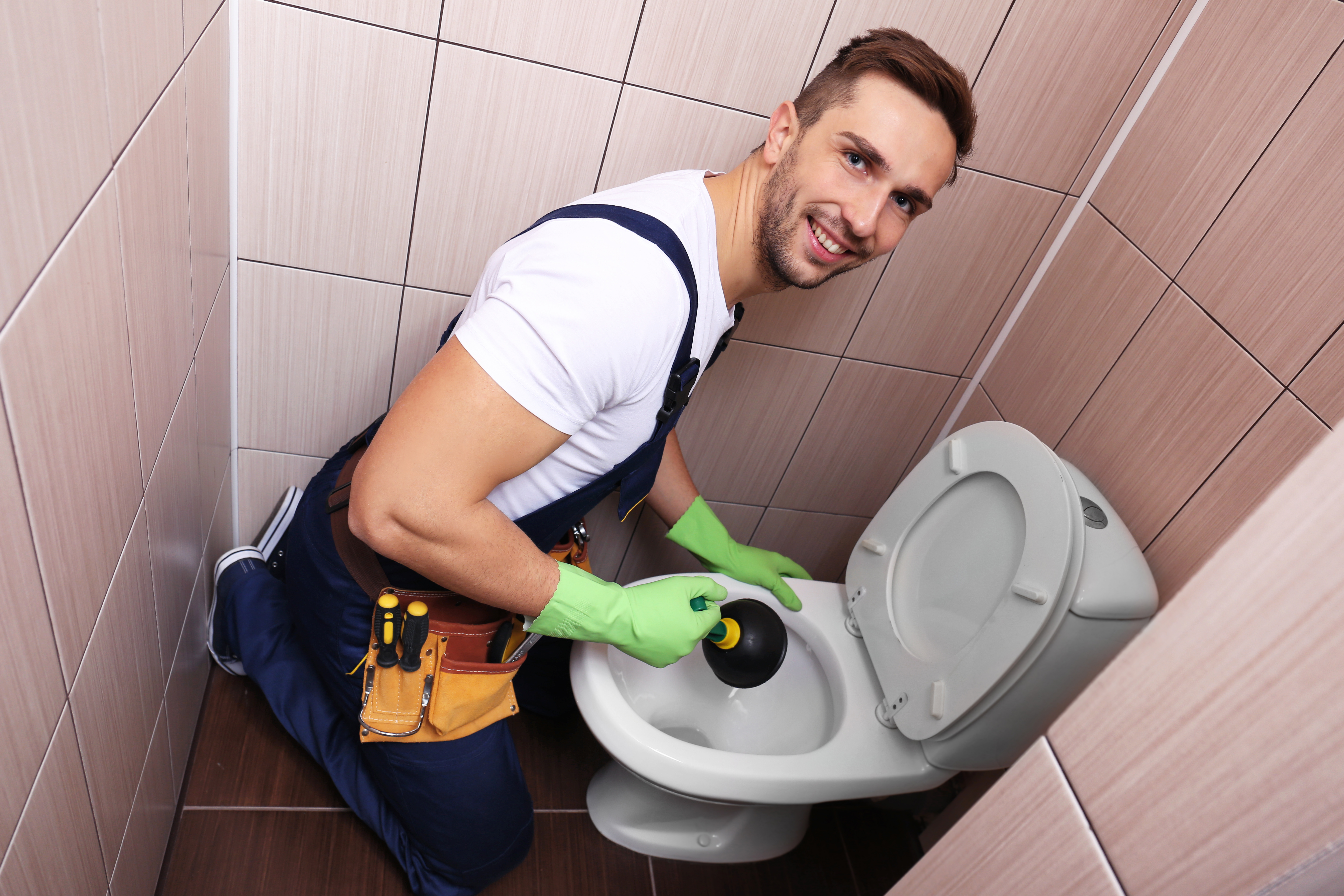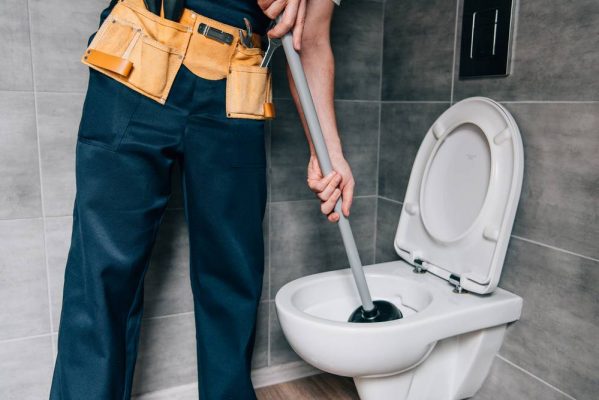Right here in the next paragraphs you can locate additional decent additional info in relation to Tips on How to Effectively Use a Plunger.

Intro
Appropriate upkeep of home drains pipes is important for preventing blockages and guaranteeing smooth water flow. Among the trick tools in every property owner's toolkit is the plunger, alongside numerous drain cleansers created to take on stubborn obstructions effectively. This write-up explores how to make use of plungers and drainpipe cleaners properly to maintain your drains streaming easily.
Section 1: Understanding Bettors
Kinds of Plungers
There are numerous sorts of plungers offered, each created for different sorts of drains and blocks. One of the most usual kinds consist of cup plungers, flange bettors, and accordion bettors.
Exactly How Plungers Work
Plungers service the principle of developing pressure and suction to dislodge blockages. When appropriately used over a drainpipe, they develop a vacuum cleaner that can pull out debris or separate blockages.
Choosing the Right Bettor
Choosing the right plunger depends upon the kind of drainpipe and the nature of the obstruction. Cup plungers are optimal for sinks and bathtubs, while flange plungers are much better matched for commodes due to their design.
Typical Errors with Plungers
Staying clear of these errors makes certain effective plunging: incorrect seal around the drainpipe, insufficient pressure, and not clearing surrounding debris.
Area 2: Using Plungers Successfully
Prep work
Before diving, guarantee the plunger covers the drain totally and creates a tight seal. Clear any visible debris around the drain opening.
Method
Begin with gentle plunging motions to build suction. Rise stress gradually, utilizing a constant rhythm. Repeat as needed up until the drainpipe gets rid of.
Troubleshooting Tips
If diving does not work, try readjusting the seal, applying oil jelly for a much better seal, or using a different sort of plunger.
Area 3: Recognizing Drain Cleansers
Types of Drainpipe Cleaning Company
Drain pipes cleansers can be chemical or chemical. Chemical cleaners make use of strong chemicals to liquify obstructions, while enzymatic cleansers use all-natural enzymes to break down raw material.
Exactly How Drain Cleaners Work
Chemical cleaners react with clogs to liquify them, while enzymatic cleaners break down natural materials like hair and oil without harming pipelines.
Safety and security Factors to consider
Always use gloves and eye security when utilizing chemical drain cleansers. Make certain appropriate ventilation and comply with manufacturer guidelines carefully.
Eco-Friendly Alternatives
Consider using vinegar and baking soft drink or enzyme-based cleaners for environment-friendly options that are safer for pipelines and the environment.
Section 4: Using Drainpipe Cleaners Efficiently
Application Techniques
Put chemical cleansers straight into the drainpipe opening. Permit them to work for the advised time before purging with warm water. Enzymatic cleaners ought to sit overnight.
Preventative measures
Avoid blending different kinds of cleaners, as this can produce poisonous fumes. Never utilize chemical cleansers together with a plunger, as splashing can occur.
Managing Stubborn Blockages
For persistent obstructions, think about utilizing a plumbing snake or calling a specialist plumbing technician to prevent damage to pipes.
Final thought
Finally, comprehending just how to use plungers and drain cleansers efficiently is crucial for maintaining healthy and balanced pipes systems. By selecting the right devices and methods, home owners can take on small obstructions and protect against significant pipes issues down the line.
How to Use a Plunger to Unclog a Drain
The humble plunger is a simple yet effective tool for breaking clogs in sinks, tubs and toilets. This handy tool is easy to use. You can make the most of its power if you understand how it works. Ready to dive in? Here’s what you need to know.
Safety First!
Never use a plunger with drain chemicals. Water will splash as you work, and the chemicals can spatter, burning skin and eyes. It’s a good idea to use rubber gloves and wear safety goggles when you work on a clog.
Choose the Right Tool for the Job
Plungers come in two different styles. Sinks, bathtubs and showers require a cup plunger. Like its name suggests, the rubber end is shaped like a cup. Use a flange plunger on toilets. These plungers have a rubber funnel extending from the cup. A plunger needs to be big enough to cover the drain.
Ready, Set, Plunge!
Coat the rim: Coat the plunger rim with petroleum jelly. This helps make a better seal.
Block outlets: Hold a wet rag over nearby outlets such as the overflow vent or the drain in a second sink.
Release air: Insert the plunger at an angle into the water. Water will displace air in the cup. A water-filled cup is more forceful than one filled with air.
Keep the plunger upright: Hold the plunger perpendicular to the drain. Use fast, forceful strokes, but make the first stroke gentle. The first stroke can create a splash if the cup still contains air. Thrust the plunger 15 to 20 times.
Snap off the plunger: The final stroke should be a strong upward motion that ends when the plunger snaps off the drain.
Repeat the process: you may need to repeat this sequence several times. When the water drains away, your work is done. High-five! https://plumbernw.com/blog/how-to-use-a-plunger-to-unclog-a-drain/

Application Techniques
Put chemical cleansers straight into the drainpipe opening. Permit them to work for the advised time before purging with warm water. Enzymatic cleaners ought to sit overnight.
Preventative measures
Avoid blending different kinds of cleaners, as this can produce poisonous fumes. Never utilize chemical cleansers together with a plunger, as splashing can occur.
Managing Stubborn Blockages
For persistent obstructions, think about utilizing a plumbing snake or calling a specialist plumbing technician to prevent damage to pipes.
Final thought
Finally, comprehending just how to use plungers and drain cleansers efficiently is crucial for maintaining healthy and balanced pipes systems. By selecting the right devices and methods, home owners can take on small obstructions and protect against significant pipes issues down the line.
How to Use a Plunger to Unclog a Drain
The humble plunger is a simple yet effective tool for breaking clogs in sinks, tubs and toilets. This handy tool is easy to use. You can make the most of its power if you understand how it works. Ready to dive in? Here’s what you need to know.
Safety First!
Never use a plunger with drain chemicals. Water will splash as you work, and the chemicals can spatter, burning skin and eyes. It’s a good idea to use rubber gloves and wear safety goggles when you work on a clog.
Choose the Right Tool for the Job
Plungers come in two different styles. Sinks, bathtubs and showers require a cup plunger. Like its name suggests, the rubber end is shaped like a cup. Use a flange plunger on toilets. These plungers have a rubber funnel extending from the cup. A plunger needs to be big enough to cover the drain.
Ready, Set, Plunge!
Coat the rim: Coat the plunger rim with petroleum jelly. This helps make a better seal. Block outlets: Hold a wet rag over nearby outlets such as the overflow vent or the drain in a second sink. Release air: Insert the plunger at an angle into the water. Water will displace air in the cup. A water-filled cup is more forceful than one filled with air. Keep the plunger upright: Hold the plunger perpendicular to the drain. Use fast, forceful strokes, but make the first stroke gentle. The first stroke can create a splash if the cup still contains air. Thrust the plunger 15 to 20 times. Snap off the plunger: The final stroke should be a strong upward motion that ends when the plunger snaps off the drain. Repeat the process: you may need to repeat this sequence several times. When the water drains away, your work is done. High-five! https://plumbernw.com/blog/how-to-use-a-plunger-to-unclog-a-drain/

I'm certainly very occupied with Here's How to Correctly Use a Toilet Plunger and I'm hoping you liked our blog posting. Loved our blog posting? Please share it. Help someone else find it. Thank you so much for going through it.
Get A Free Quote